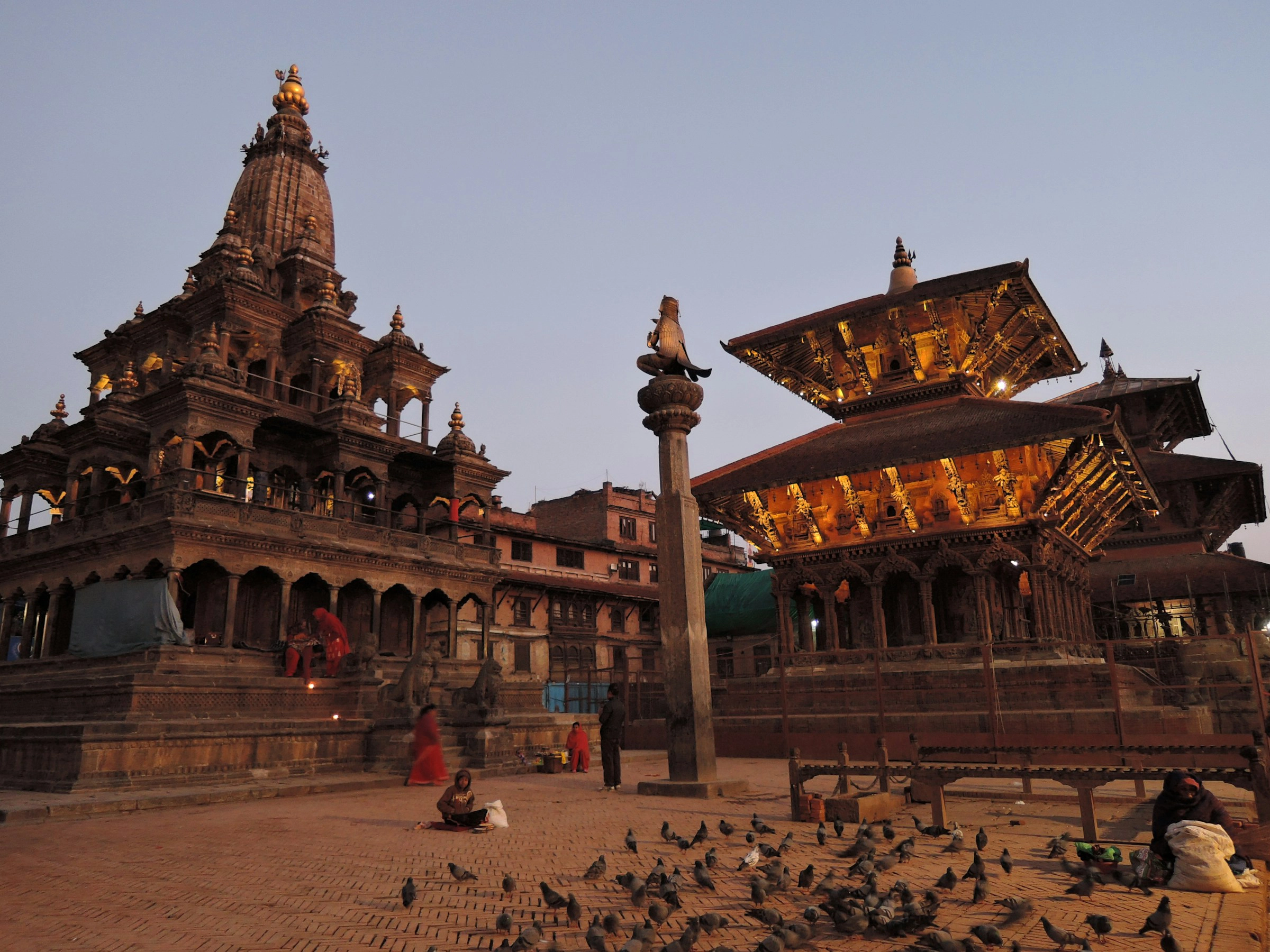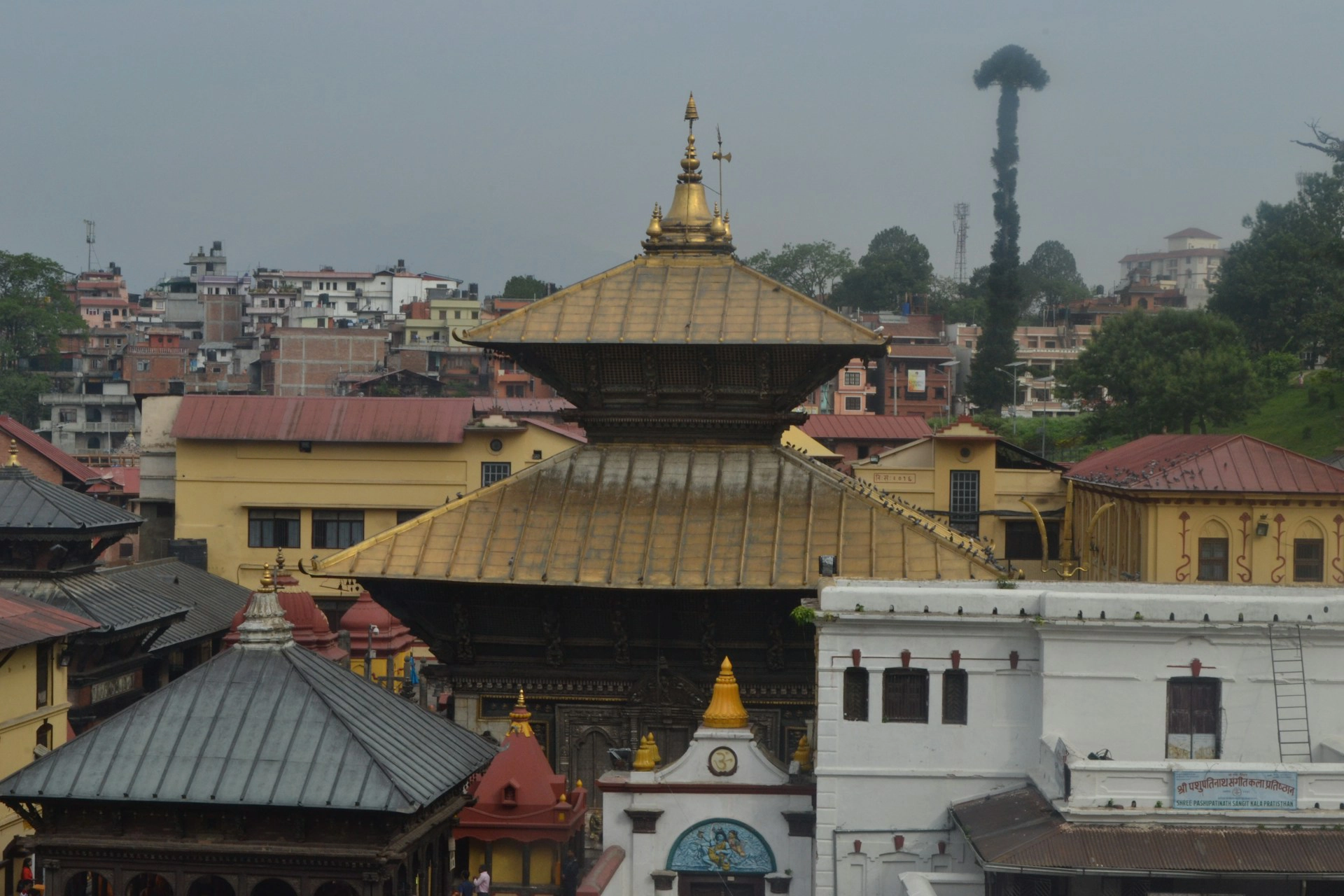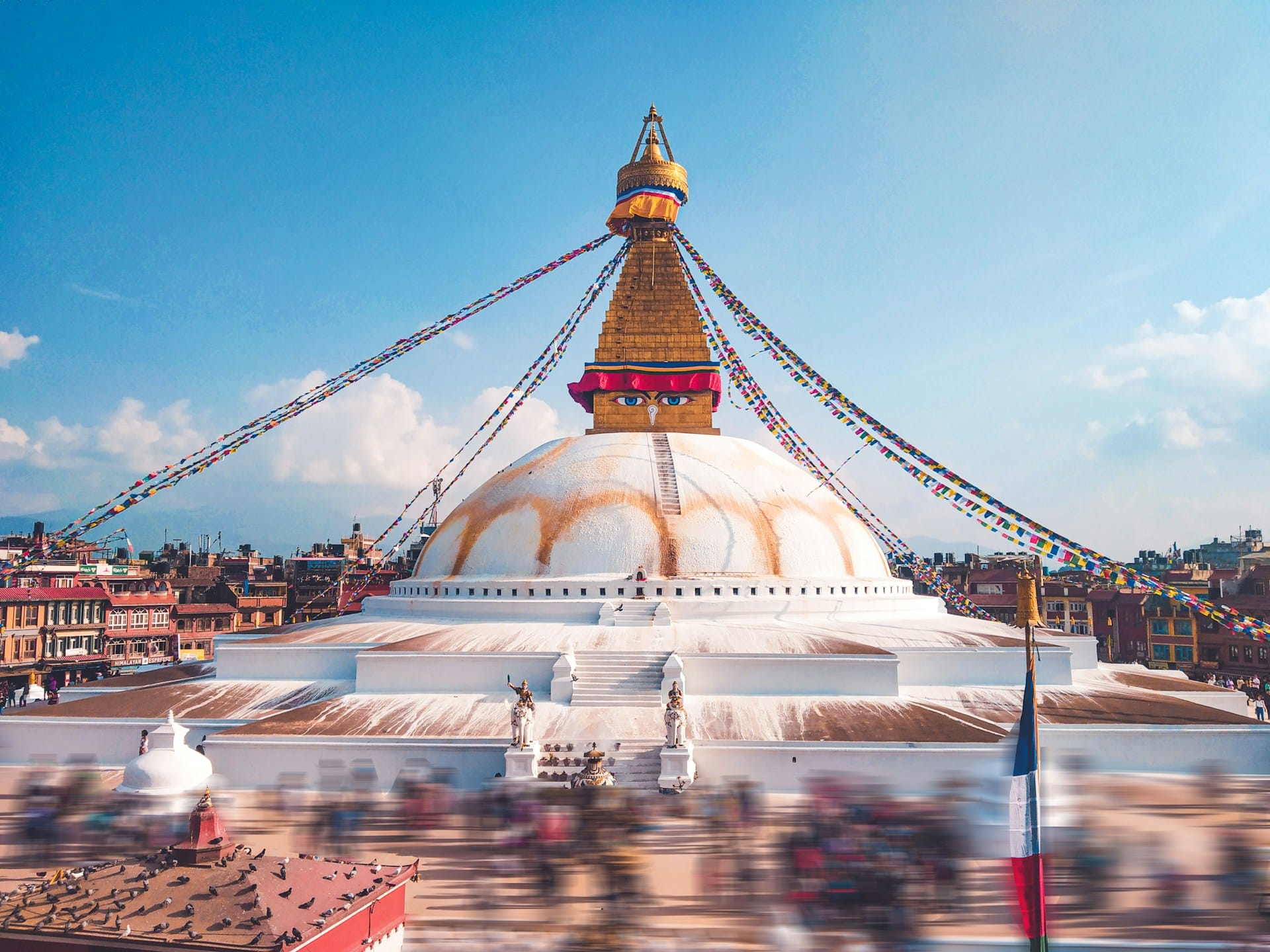Nepal is deeply rooted in its social fabric and is known for its Local Festivals and culturally rich legacy, which makes it a haven of lively cultural celebrations. Those celebrations, in particular, reflect the nation’s deep spiritual values and rich legacy.
Well! You can find many interesting things at the Atisha Hotel near the Bouddhanath Stupa. Your visit will offer several options, including walking around the market and savoring delicious, authentic local food at the cafes and eateries. You may also investigate how people live their lives. You might see Newari priests praying for world peace if you are fortunate.
This is the best way to experience the area at any time. Still, if you happen to be here during a particular festival or cultural event, you will be astounded by the vibrant lights of the celebrations. For the pleasure, spirituality, and vibrant energy that these celebrations offer, the Atisha Hotel is the perfect place to start. Whether you are here for a short visit or a more extended cultural experience, you will be amazed by the activities happening outside our hotel.
Below are the major festivals and cultural events you can experience while staying at the Atisha Hotel during these festivities. You will also get an idea of locally celebrated events around Bouddha.
Local Festivals and Vibrant Cultural Events Near Atisha Hotel
Tibetan and Buddhist communities celebrate a few festivals nationwide, including Buddha Jayanti and Losar. In addition to these two, there are Jatras celebrated around the Kathmandu Valley. If you stay at the Atisha Hotel, you are ideally situated in the heart of these spiritual and cultural events.
Buddha Jayanti
Buddha Jayanti, or the birthday of Siddhartha Gautama (later known as Gautama Buddha), is one of the most important celebrations in Nepal. It is held during the full moon in May, which falls on the Baishakh month in Nepal. Almost all stupas come alive on this special day, with butter lamps, prayers, monks roaming around, chanting holy mantras, and more. Flowers are placed throughout monasteries and temples, and worshipers light candles and lights.
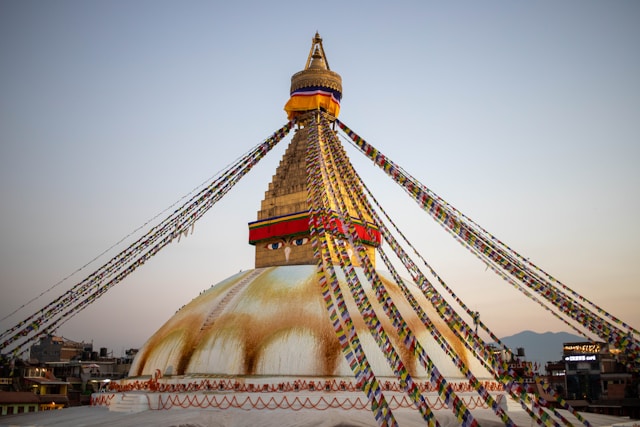
Losar (Tibetan New Year)
Losar, also known as the Tibetan New Year, is celebrated worldwide by Tibetan Buddhist communities, mostly at stupas. This time, it is scheduled for 24 February 2025. The Bouddhanath Stupa, situated near the Atisha Hotel, is one of the primary locations to celebrate Losar.
Buddhists from different groups come together there. They enjoy cultural shows, watch traditional dances featuring masks, and offer sacrifices to their gods. Another stupa nearby is the Swayambhunath Stupa, which also hosts similar celebrations. These two stupas are the main spots to experience the festive event fully.
You can celebrate multiple Losars on different stupas, including Tamu Losar (Gurung Community), Sonam Losar (Tamang Community), and Gyalpo Losar (Sherpa Community).
However, a few cultural festivals and events are unique to Kathmandu, Bhaktapur, and Lalitpur.
Local festivals in Kathmandu Valley
Indra Jatra
Indra Jatra, also known as Yenya Punhi, is the biggest jatra in Nepal and is celebrated with great enthusiasm throughout the Kathmandu Valley. The eight-day Indra Jatra is held to honor the Hindu Lord Indra, who is believed to provide the monsoon rains that enable farming. Hindus and Buddhists commemorate Indra Jatra, which has special meaning in the Kathmandu Valley.
According to the Lunar calendar, the celebration starts on the 12th day of the month of Bhadra. Following the conquest of Kathmandu by King Prithvi Narayan Shah of Gorkha in 1768, the festival—which the Newar people had previously called Yenya Punhi—was renamed Indra Jatra. Here, the Yenya has its meaning. In the Newar language, “Ye” means Kathmandu, “Ya” means celebration, and “Punhi” means the full moon day. So, Yenya Punhi is celebrated as the birthday of Kathmandu’s old city. Once the name and a few rituals were altered, it became a national celebration in Nepal.
Indra Jatra is Nepal’s biggest street celebration, drawing thousands of visitors and residents alike. It highlights Kathmandu’s vibrant culture and sense of community, making it a joyful experience for everyone.
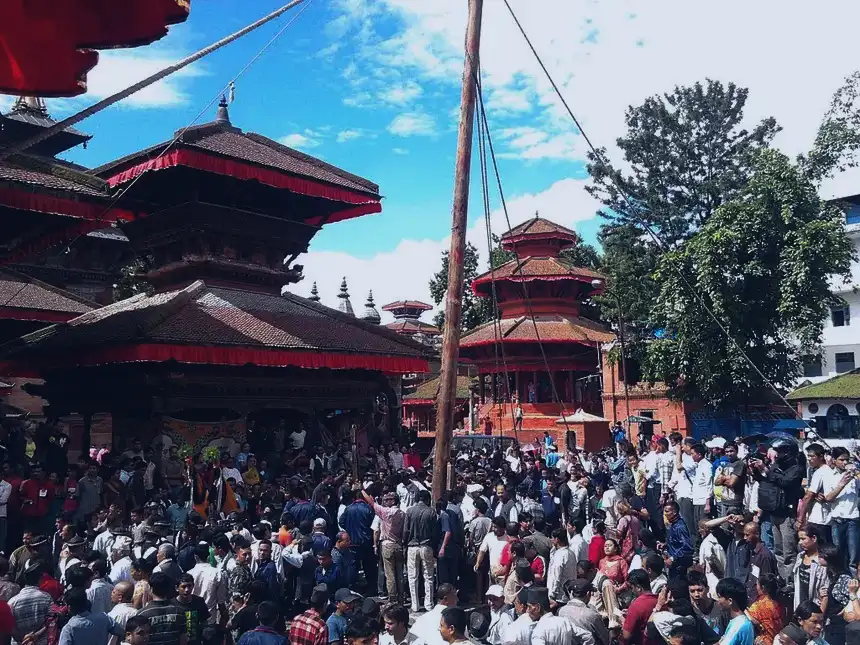
Gai Jatra
Gaijatra is a Nepalese Newari festival introduced by a Malla King to cope with his grief. It serves as a festival and a kind of therapy for bereaved families. The celebration often takes place in the month of Bhadra (August/September). Nepal’s distinctive Gaijatra celebration honors the most tragic events with optimism, comfort, and the realization that one can live a happy life despite missing the people they love. Gai Jatra is celebrated to honor departed family members and to express the family’s sorrow.
If we look back at history, this festival was first celebrated during the rule of King Pratap Malla. When the queen could not cope with their son’s death, Prince Chakravatendra Malla, the ordinary people staged a cow parade and, at the king’s request, attempted to cheer the queen up with comedic acts. Even now, the parade, comedic competitions, and performances still occur.
Despite being a celebration of memories, this festival also conveys a powerful message about the importance of expressing one’s thoughts and opinions on current social and political issues. According to ancient folktales, the practice of Gaijatra, which involves dressing as the opposite gender, is said to help ward off evil spirits and bring good fortune.
Biska Jatra
Biska Jatra, also known as Bisket Jatra, is commonly referred to by another name: “Bisya Jatra.” The name “Bisya” is derived from the words “Bi,” which denotes a gigantic snake, and “sya,” which signifies “to kill.” Consequently, it suggests that it is a celebration of slaying an enormous snake. It is celebrated at the beginning of the Nepali New Year, but this festival has no connection to the new year. Being one of the biggest Jatras in Nepal, this festival lasts nine days and eight nights. Balkumari Thimi, Taumadi Square, and Bhaktapur Durbar Square are the festival’s most exciting locations.
Two wooden poles, known as lingos, are placed in two locations across the city during the celebration. The two enormous raths are also designed to collide with one another when the big one is pulled down in the New Year. The fact that several groups of young men from the area compete for the honor of bringing the enormous wooden pole to the ground makes it clear that these two activities need a significant amount of pushing and tugging. Meanwhile, other young guys with the same enthusiasm are busy putting their might to the test by pulling at the raths in a simulated tug-of-war. Then there is chaos. You may ask yourself, ‘What a festival!’ but wait, there’s more to this.
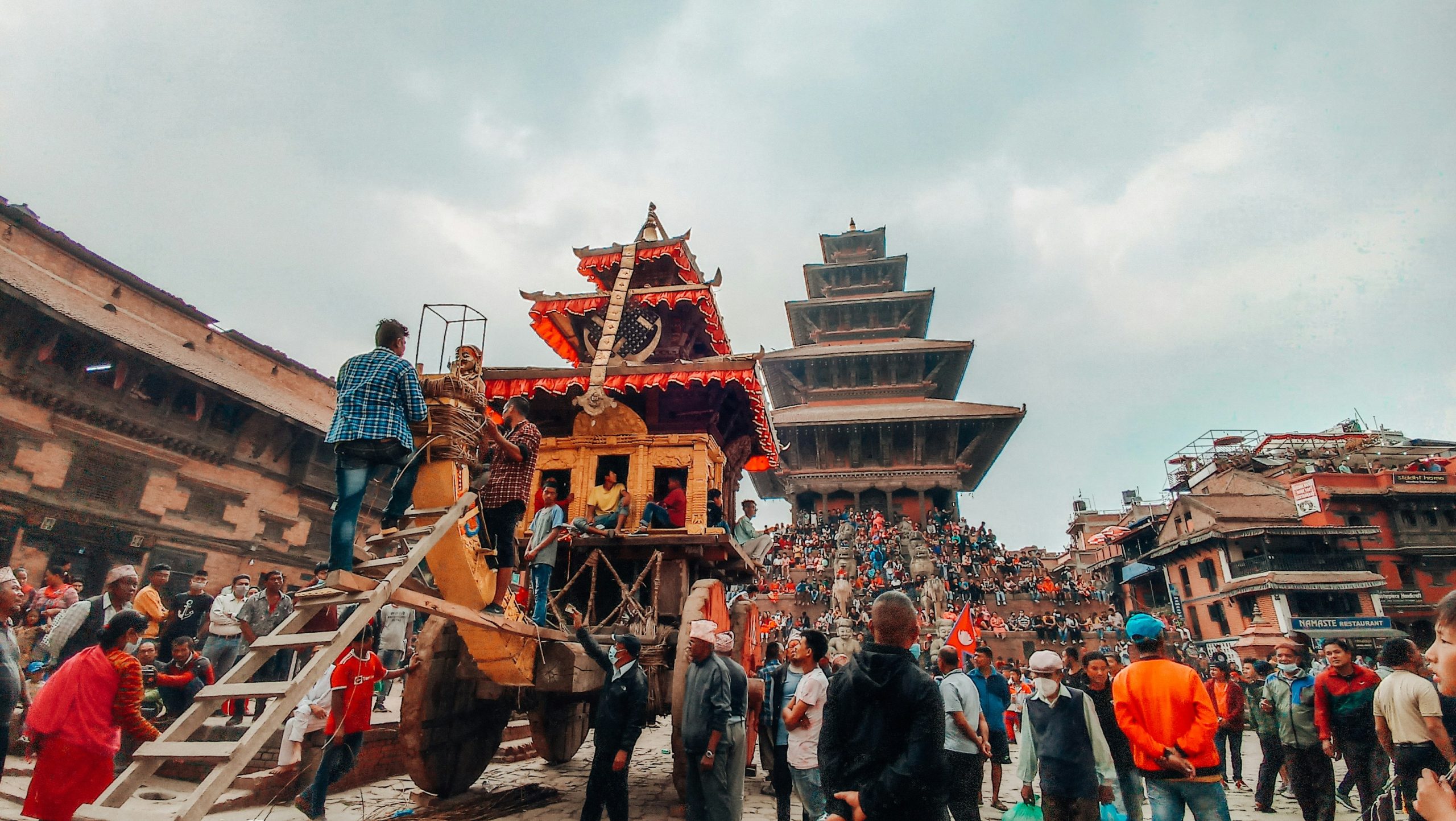
The Biska Jatra is quite impressive and has a fascinating story behind it. This is how it all started…
During King Jagajyoti Malla’s reign (1613-1637), he was fond of one legend and wanted to commemorate it annually with a unique celebration called Biska Jatra.
So, who is this legend, and what has he done that impresses King Jagajyoti Malla? You will know the truth behind the name of Jatra through this tale.
According to the tale, there once was a princess who appeared to be cursed; hence, everybody who married her died on the morning after the wedding night, and in every single instance, it was found that the marriage had not yet been consummated. Several prospects were killed in this way (unnecessarily). But a wise man appeared and offered to marry the cursed princess, risking his life.
But he had a plan; he would do nothing—nothing at all—but remain awake. As he lay down, he witnessed a horror where a terrifying-looking serpent slithered out of one of the nostrils of a sleeping princess. At this moment, the wise man demonstrates that he is brave and clever, cutting the serpent’s head with a single stroke of his sword. The chaos and anxiety that the city’s residents had been experiencing for a while ended. And they lived happily ever after.
Quite a story, huh! Amazing, right? This tale carries a powerful message, as the serpent’s end suggests that good triumphs over evil. So, the two raths fighting means intercourse, which is a sign of a successful marriage, and the dropping of the pole represents the triumph of good over evil.
There is another story, too, that is linked to these Jatras. However, regardless of the different stories, a common point is the successful bonding of male and female entities.
Ghode Jatra
Ghode Jatra is a festival of horses, where “Ghode” means horse and “Jatra” means parade. The Nepal Army celebrates this festival at Tundikhel with a display of horse racing, martial arts, and more. It falls in the Chaitra month (mid-March or early April) of the Nepali Calendar. This is essentially a grand celebration of victory and a day for gathering with family, relatives, and neighbors.
The tale states that the Ghode Jatra is held to commemorate the defeat of a monster called Tundi, who once ruled over the meadow now known as Tundikhel. People danced over Tundi’s body with horses in celebration of his death. The demon’s soul, which still threatens the city, is thought to be repelled by the cacophony of horse hooves at Ghode Jatra in Tundikhel.
Rato Machhindranath Jatra
Rato Machhindranath Jatra is one of the oldest and most important festivals of Patan, Lalitpur. It is celebrated to appease Rato Machhindranath, a deity associated with rain and agriculture. This Jatra is celebrated annually during Baishakh month (April-May), right before the arrival of the monsoon in the Kathmandu Valley.
Jatra is always about chariot pulling. Once the chariot is built, the revelers pull it through various places in Lalitpur, including Natole, Gabahal, Mangal Bazaar, Sundhara, Lagankhel, and Kumaripati, and it ends at Jawalakhel. This jatra’s month-long celebration comes to a close with Bhoto Jatra, where a jewel-encrusted ancient vest (Bhoto) is displayed to the public in the hope that its rightful owner will come forward and claim it with proof of ownership.
There are several tales surrounding the celebration, which date back more than 1600 years. Despite their differences, the drought in the Kathmandu Valley is a common theme across all the stories. According to a famous tale, Guru Gorakhnath once visited Patan, although no one knew his identity. Since the commoners were unaware of his identity, no one fed him. He meditated to punish the people after capturing the NAGS (serpents) that caused the valley’s rain. The Nags were in captivity when the valley experienced a severe drought. The king, Narendra Dev, was advised to bring Goraknath’s teacher from Assam, India. The team went to Assam and requested Machhindranath to come, and yes, he did come.
Guru Gorakhnath senses that his teacher has arrived, so he stops his meditation, frees the serpents, and meets Machhindranath. The valley was saved from severe drought when the serpents were set free and began to create rain. We think rain always arrives before the serpents wreak havoc because they have returned to cleanse the people of all their sins and impurities. The Jatra celebration was then inaugurated by King Narendra Dev in 897 A.D., and the inhabitants worshipped Rato Machhindranath.
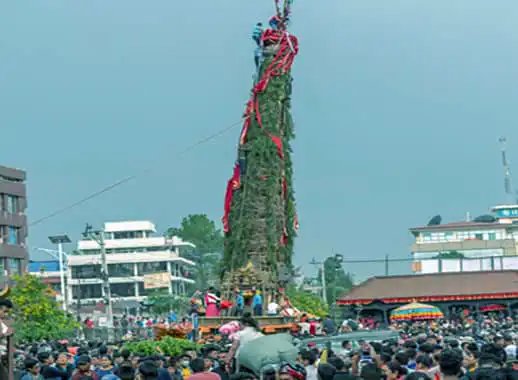
Conclusion
Yes, there is no doubt, and we are proud to say that Kathmandu Valley is truly a museum of culture and history with fantastic tales and centuries-old traditions. Through vibrant celebrations, each festival adds significance to Nepal’s rich cultural heritage. In addition to uniting people, these festivities provide tourists with a profound understanding of Nepal’s rich and multifaceted cultural heritage. Both residents and visitors create lifelong memories by attending these celebrations, which showcase the nation’s enduring ideals and vibrant spirit.
For those who wish to fully immerse themselves in these cultural experiences in Kathmandu, it is essential to stay in a comfortable hotel in the center of the valley. From here, you can quickly and easily reach any festival location.
Yes, and you have the better choice here with the Atisha Hotel.

